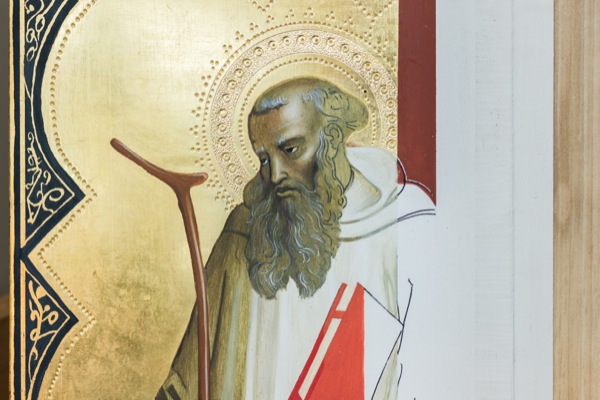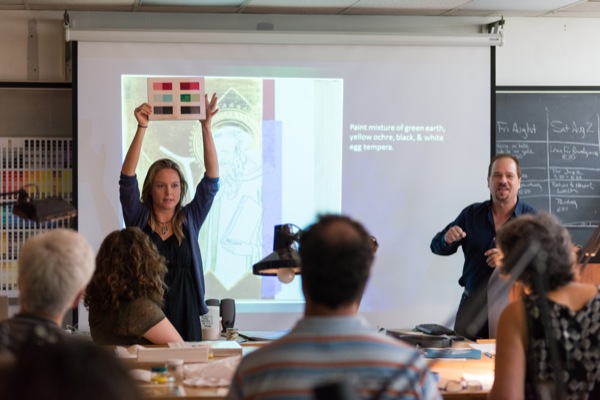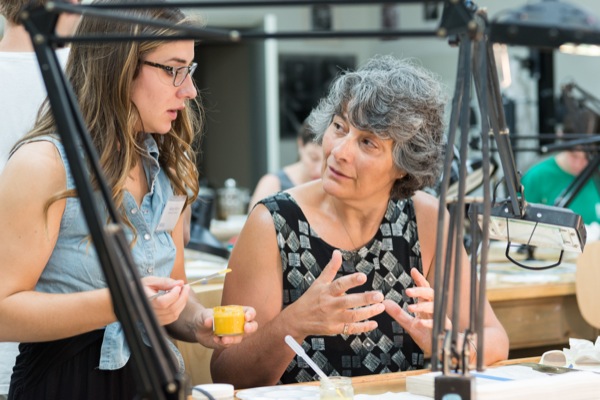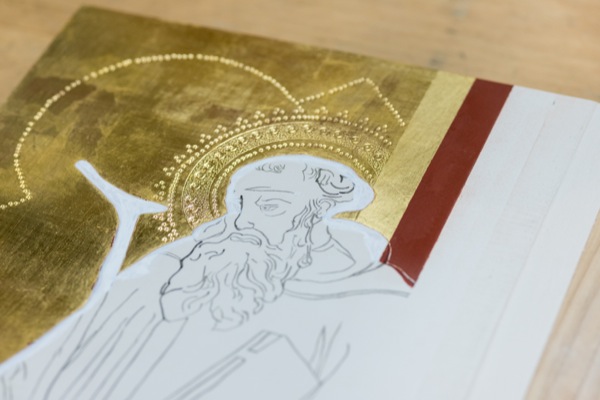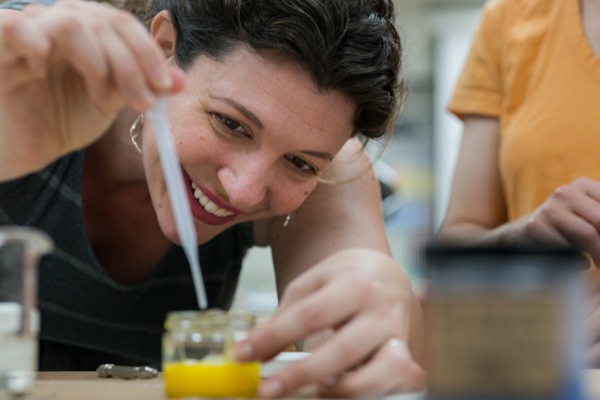

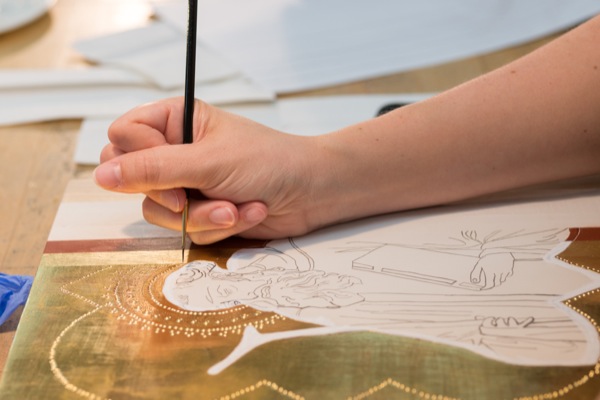
Not-so-Old Masters
Art conservation workshop lets today's professionals try traditional painting
11:17 a.m., Aug. 6, 2014--In an art conservation lab at the University of Delaware last week, they were painting like it was 1399.
Hard at work was a select group of art educators, curators and scholars from throughout the United States who took part in an intensive, weeklong workshop sponsored by the Samuel H. Kress Foundation and organized and taught by UD’s Department of Art Conservation.
Campus Stories
From graduates, faculty
Doctoral hooding
The program was designed to give today’s professionals hands-on experience in using the same types of materials and techniques as traditional Italian painters of the late 14th and early 15th centuries. In addition to an appreciation for how such artists worked, the participants also left the workshop with a piece they created and will use in educating others about traditional painting methods.
The 12 professionals invited to attend the workshop spent some long days in one of the campus conservation laboratories, involved in the painstaking process of creating a replica of a piece of art, titled “St. Romuald,” by Lorenzo Monaco (1372-1424). Participants, who also went on field trips to three area museums, described the hands-on work as fascinating and enlightening.
“I definitely have more appreciation for this process than I did before,” said Elizabeth Gallerani, of the Williams College Museum of Art, as she experimented with different mixes of pigment and egg yolk to get the precise color she needed for her egg tempera painting. “I won’t ever look at this [kind of art] the same way again.”
Curator Andrea Rosen, of the Bowdoin College Museum of Art, had been a studio art major as an undergraduate and said it was fun to be in a painting class again. “But this is certainly a different technique, so I’m learning a lot,” she said.
Before the painting process itself, each participant began with a wood panel, coated with gesso layers to create a white base, and then added fragile gold leaf to the appropriate areas, using a special “red bole” (a type of adhesive clay) applied over the white gesso.
They then carefully burnished the gold with a hand-held instrument to make it smooth and shiny and — using a tiny punch tool and miniature hammer — decorated the gold-covered areas of the painting with patterns of holes. The remaining white areas were then ready for painting.
The workshop was led by Brian Baade, assistant professor of art conservation, and Kristin deGhetaldi, a doctoral candidate in preservation studies, who teach a similar class to UD students. “But for the workshop, we had to condense a whole semester into one week,” deGhetaldi said.
To do so, the instructors and two student interns spent much of the summer preparing materials in order to save the workshop participants time during the program itself.
“We had to get everything ready so that they could concentrate on the painting,” said undergraduate intern David Brickhouse, who has majors in chemistry and art conservation. In addition to preparing for and assisting with the workshop, he and intern Kelsey Mellow, who graduated in May with majors in art conservation and art history, are also developing an educational website to demonstrate traditional painting techniques.
“This is just the best workshop,” said Felice Caivano, fine arts curator at Trinity College in Harford, Connecticut, as she worked on her piece. “It’s really cool to create something like this.”
About the sponsor
The Samuel H. Kress Foundation aims to advance the history, conservation and enjoyment of European art, architecture and archaeology from antiquity to the early 19th century.
The Kress Collection encompasses more than 3,000 works of European art, particularly Italian Renaissance paintings, which have been donated to numerous regional and academic art museums throughout the United States, with the single largest donation to the National Gallery of Art in Washington D.C.
The UD workshop, the first of its kind supported by the foundation, was designed for participants from some of the museums that house portions of the Kress Collection. Participants were selected based on their plans to use the piece created in the workshop for educational purposes at their home institutions.
Article by Ann Manser
Photos by Evan Krape




